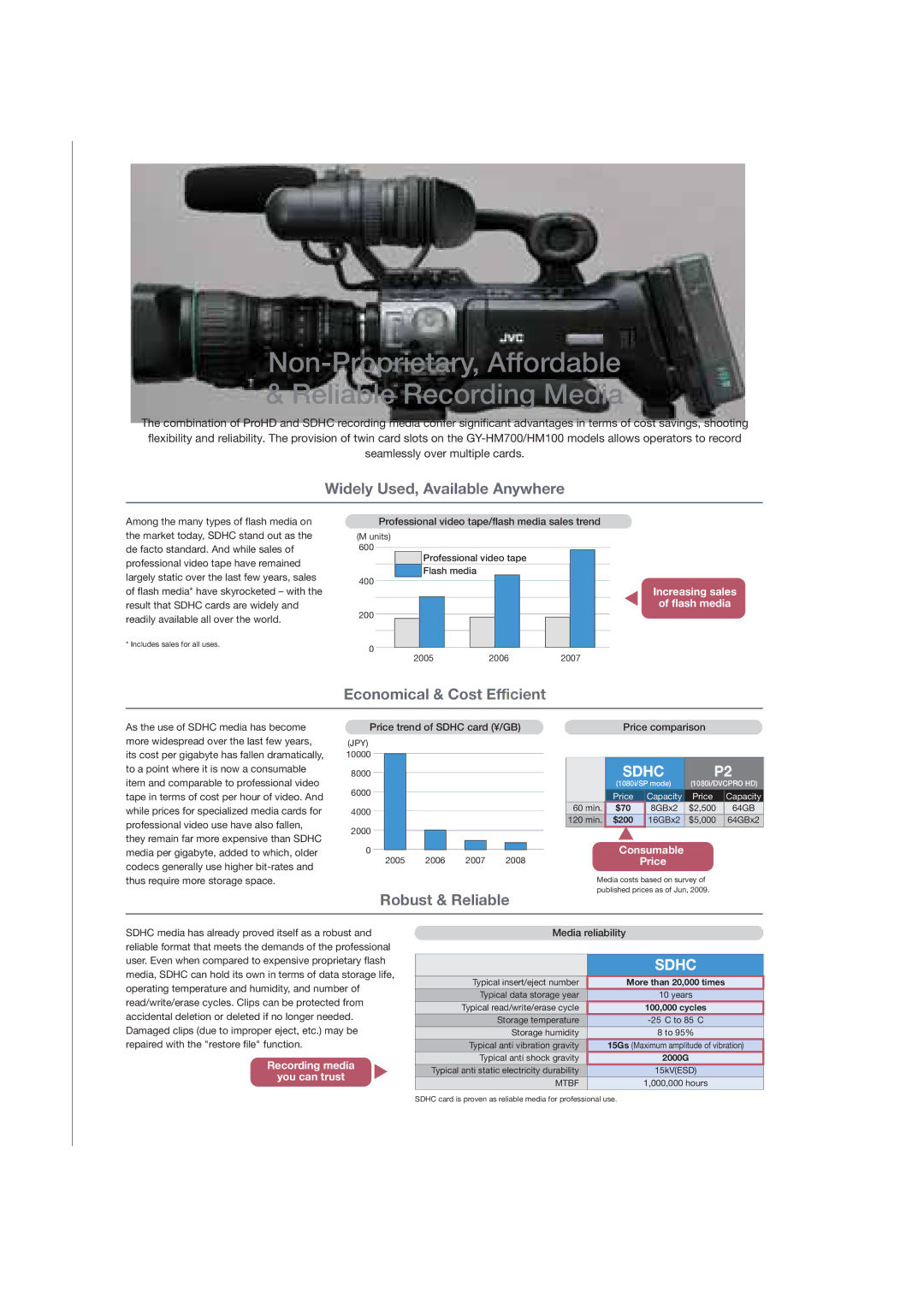GY-HM100, Gy-hm700 specifications
The JVC GY-HM700 and GY-HM100 are two prominent models from JVC's line of professional camcorders, designed to cater to the needs of videographers and filmmakers who seek high-quality video production. Both models stand out for their advanced features, robust build, and excellent performance, facilitating a wide range of shooting scenarios, from journalism to documentary filmmaking.The JVC GY-HM700 is known for its 1/3-inch CMOS sensor that captures stunning high-definition images with rich detail. It supports various recording formats, including the industry-standard MXF and the popular QuickTime format, enabling seamless workflow integration with non-linear editing systems. The GY-HM700 offers 25 Mbps broadcast-quality recording in full HD and features dual SDHC card slots for extended recording capabilities and backup.
One of the standout features of the GY-HM700 is its ergonomic design, which ensures that it is user-friendly for extended shooting sessions. The camcorder comes equipped with a 23x zoom lens that provides extensive flexibility in framing shots, allowing users to capture distant subjects without sacrificing detail. It also boasts a user-friendly interface, with customizable controls and a large LCD screen for easy monitoring.
On the other hand, the JVC GY-HM100 is a compact and lightweight camcorder that is perfect for those who prioritize portability without compromising on quality. Like the GY-HM700, it features a 1/3-inch CMOS sensor, providing excellent low-light performance and depth of field control. The GY-HM100 is particularly known for its versatility in various shooting conditions and is equipped with built-in dual recording formats: AVCHD and MPEG-2, making it a good choice for both web-based and broadcast applications.
Another notable characteristic of the GY-HM100 is its built-in 10x zoom lens, accompanied by a wide range of manual controls that give users creative freedom in their shots. This camcorder is designed for on-the-go shooting, with a durable build that withstands professional use in different environments.
Both models feature JVC's advanced "Dynamic Range" technology, which enhances image quality by preserving highlights and shadow details, thereby delivering an impressive visual output. Users of both camcorders will appreciate the range of connectivity options, including HDMI and composite outputs, making them compatible with various external monitors and equipment.
In summary, the JVC GY-HM700 and GY-HM100 offer a blend of professional features, portability, and advanced technologies, making them ideal choices for videographers looking to achieve high-quality results in a variety of settings. Whether you require a robust, full-featured camcorder or a compact and portable option, JVC's offerings deliver exceptional performance tailored to meet the demands of contemporary video production.

